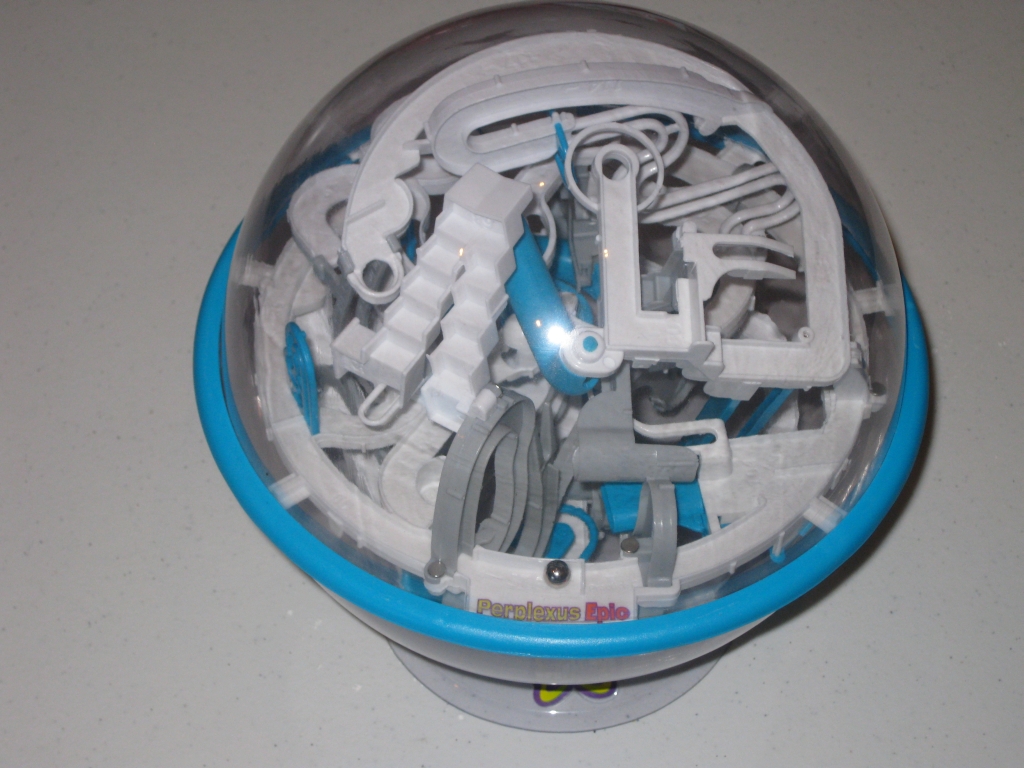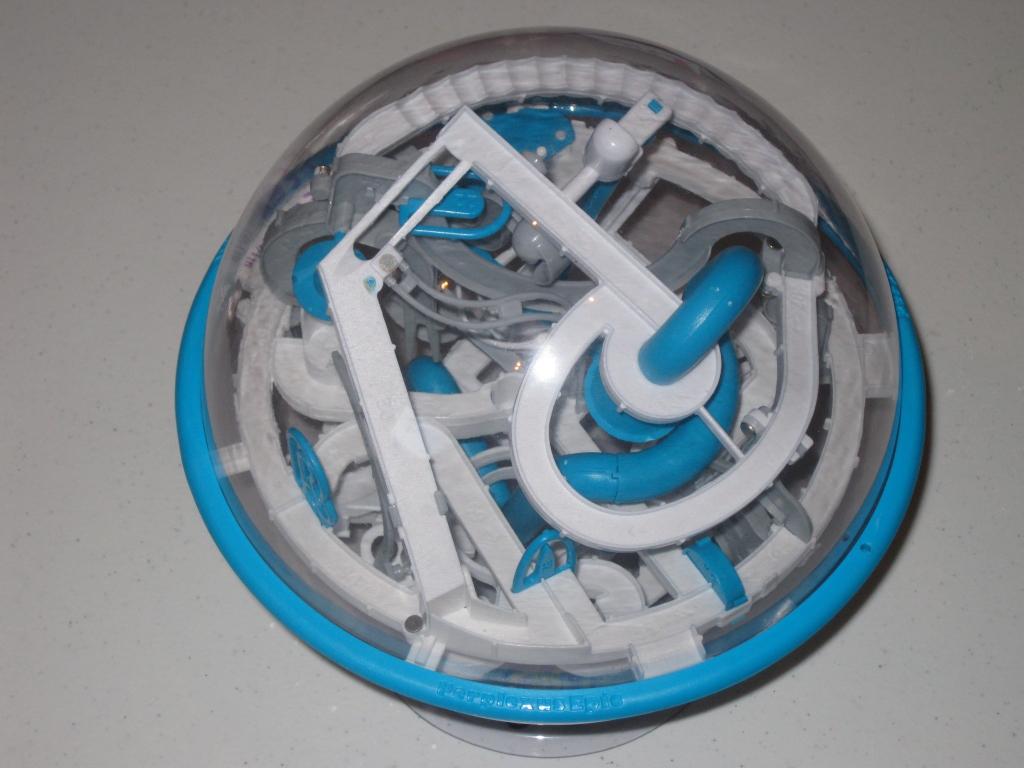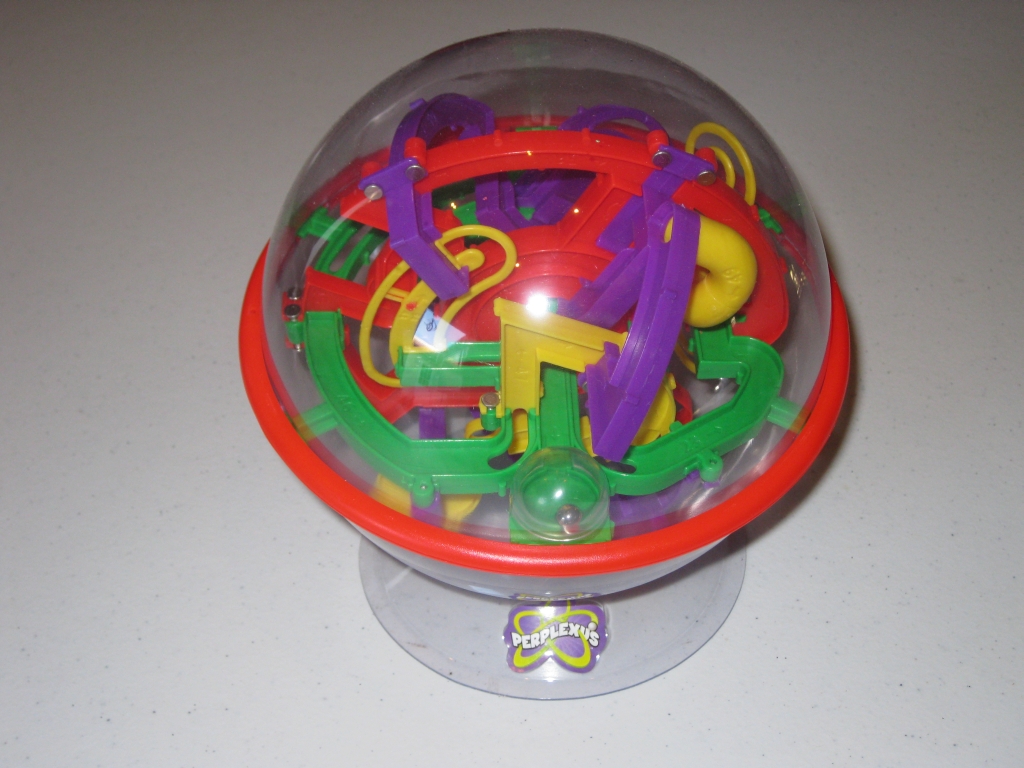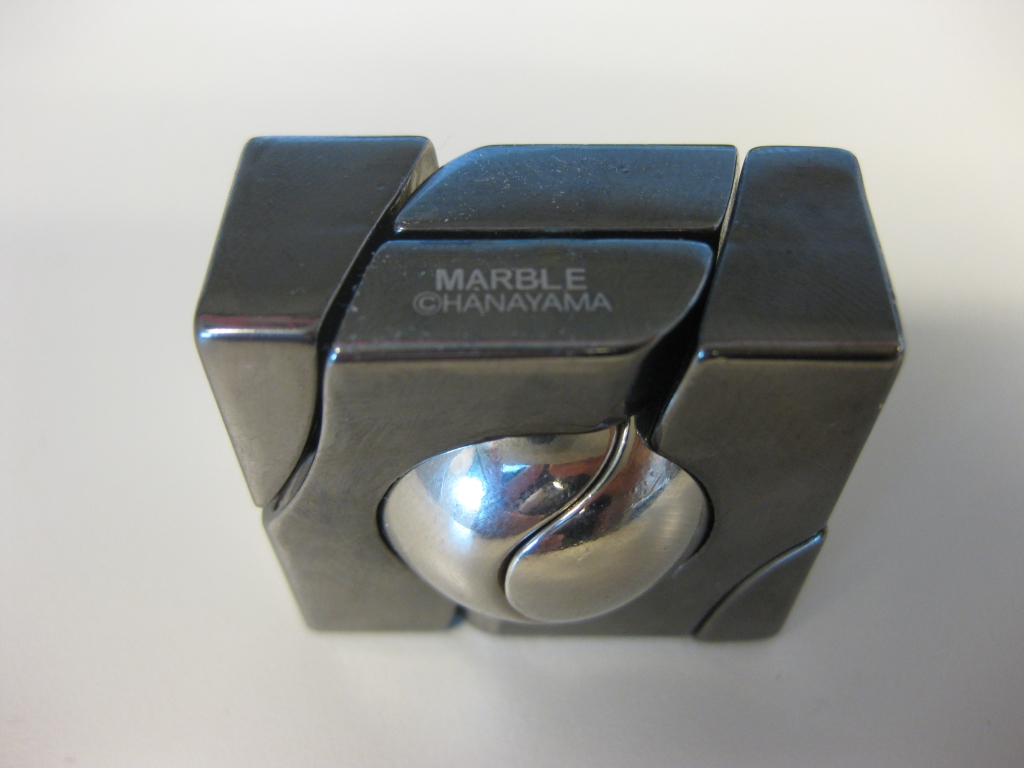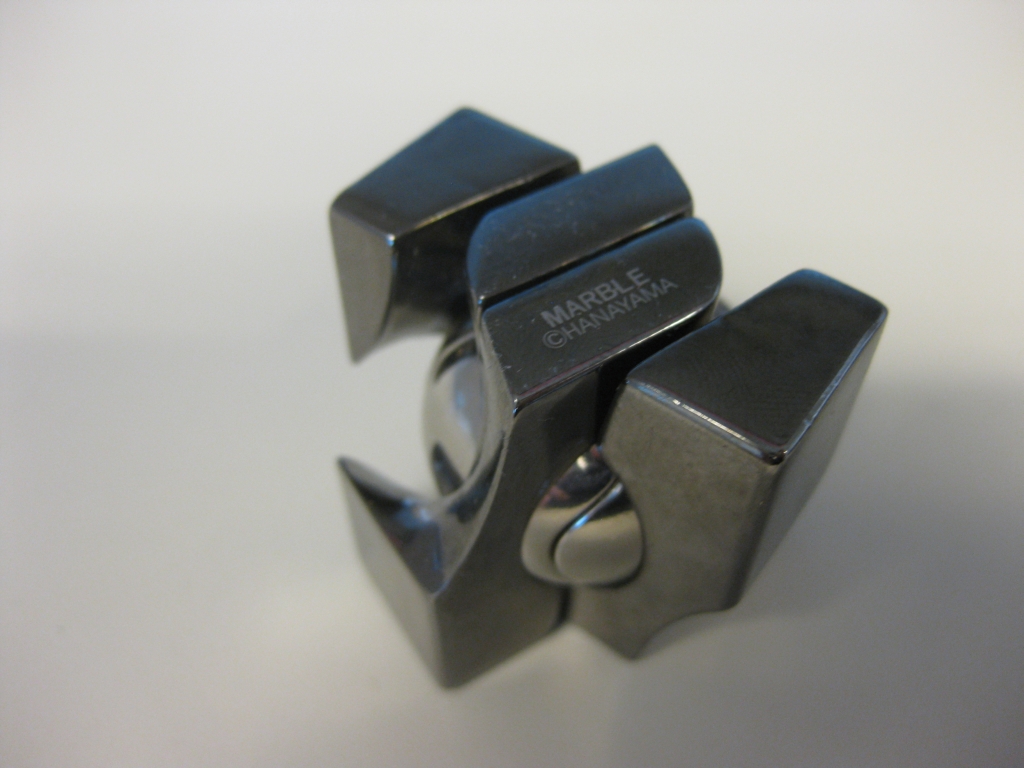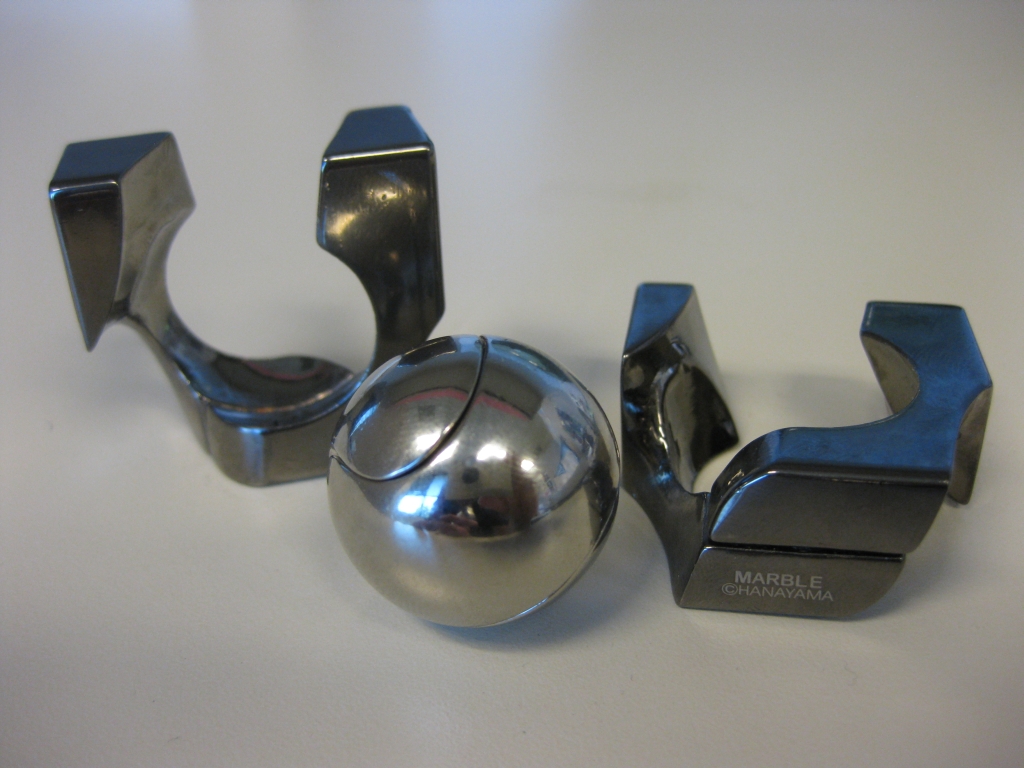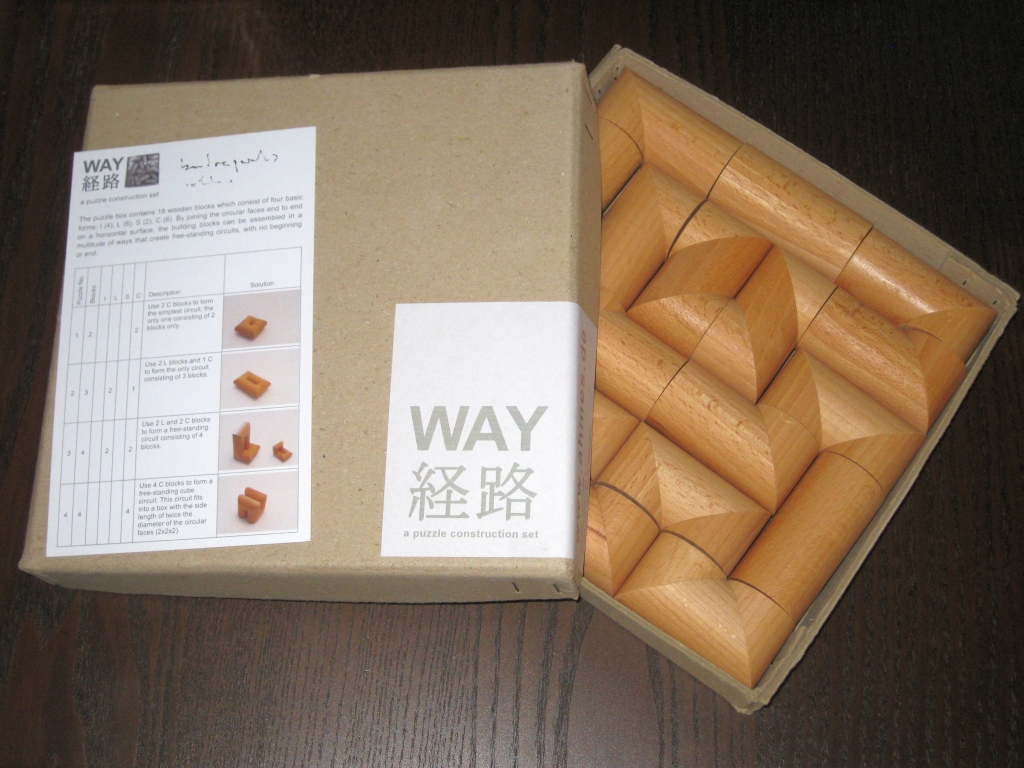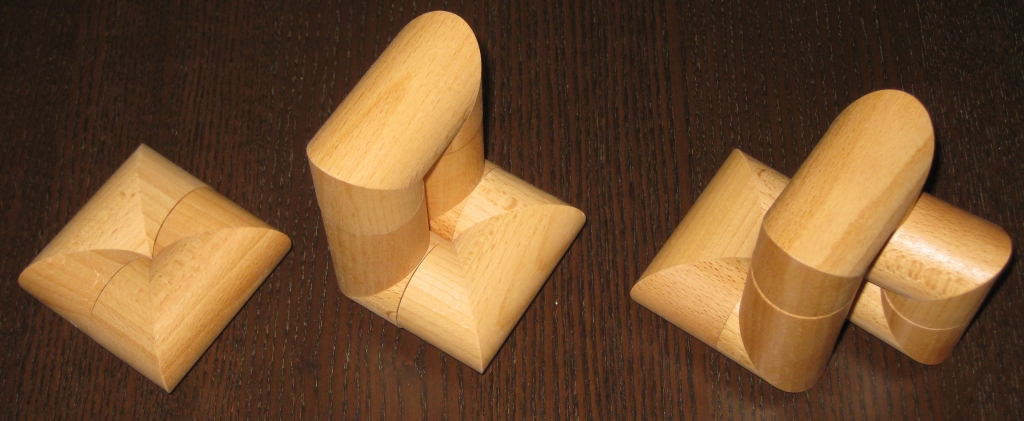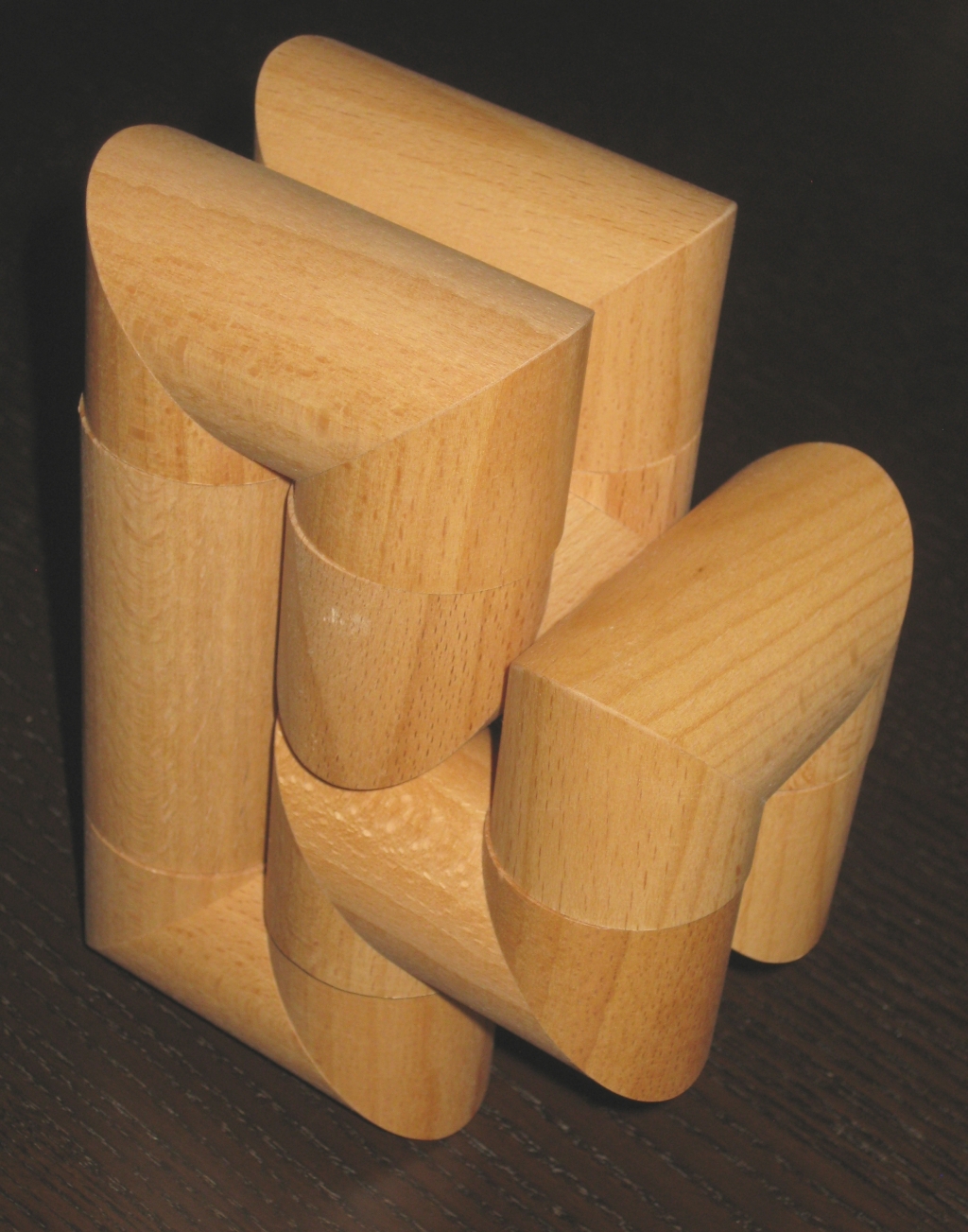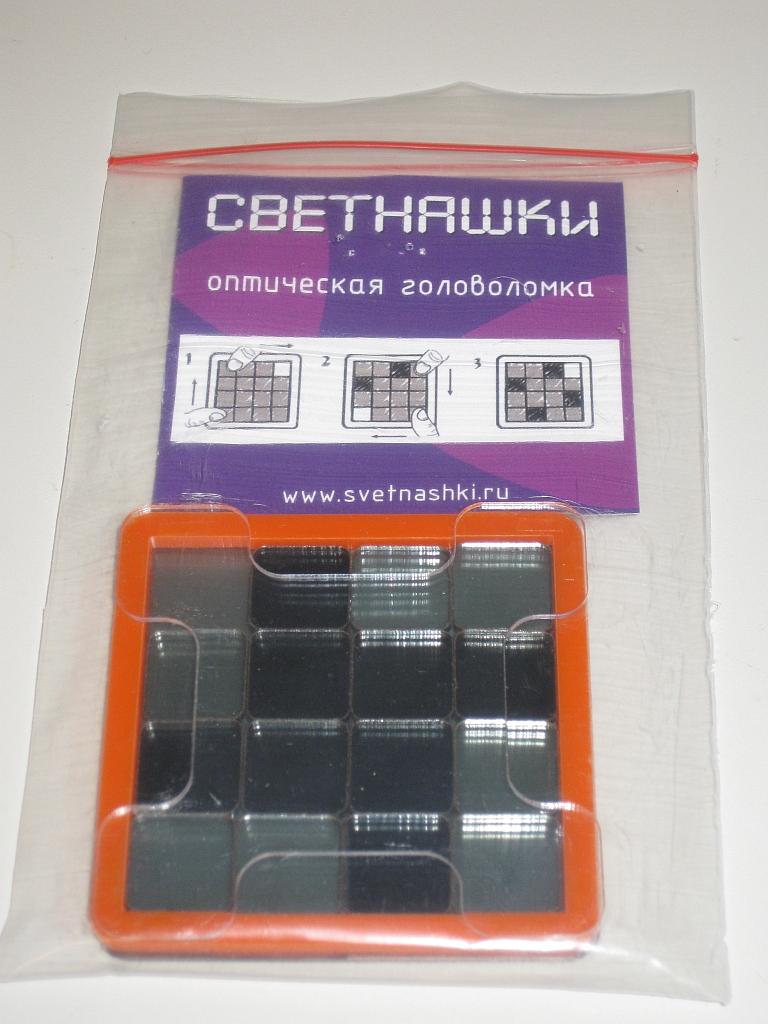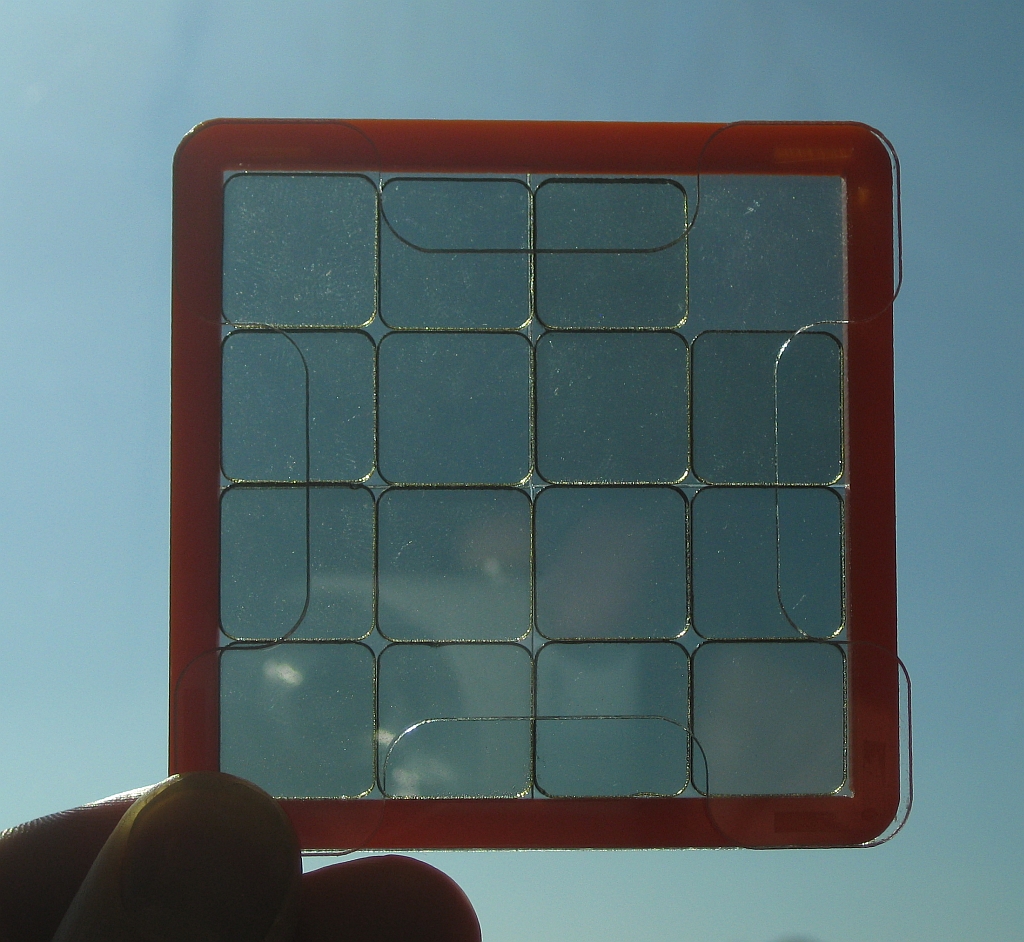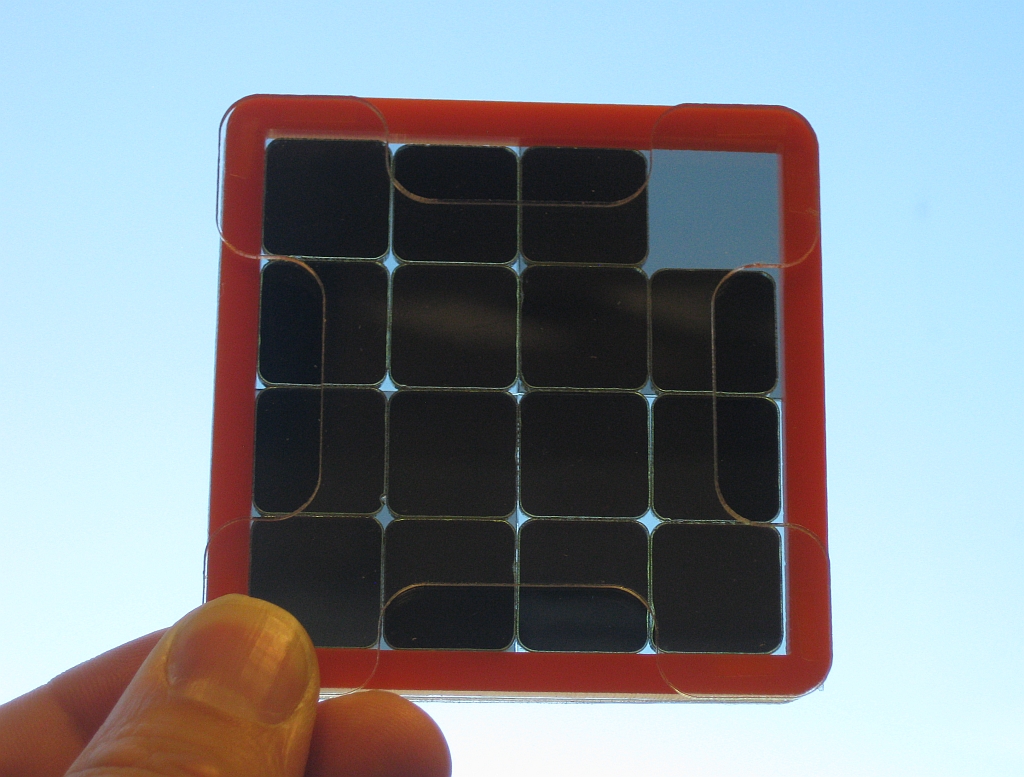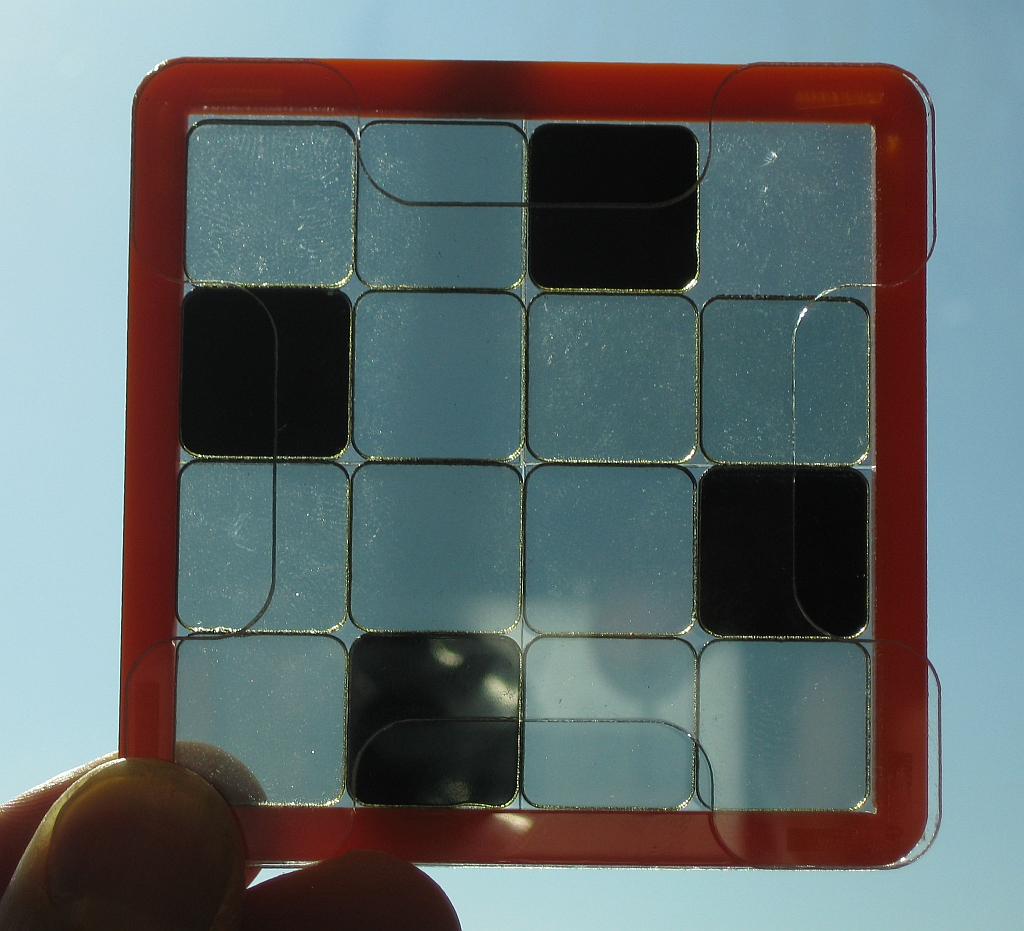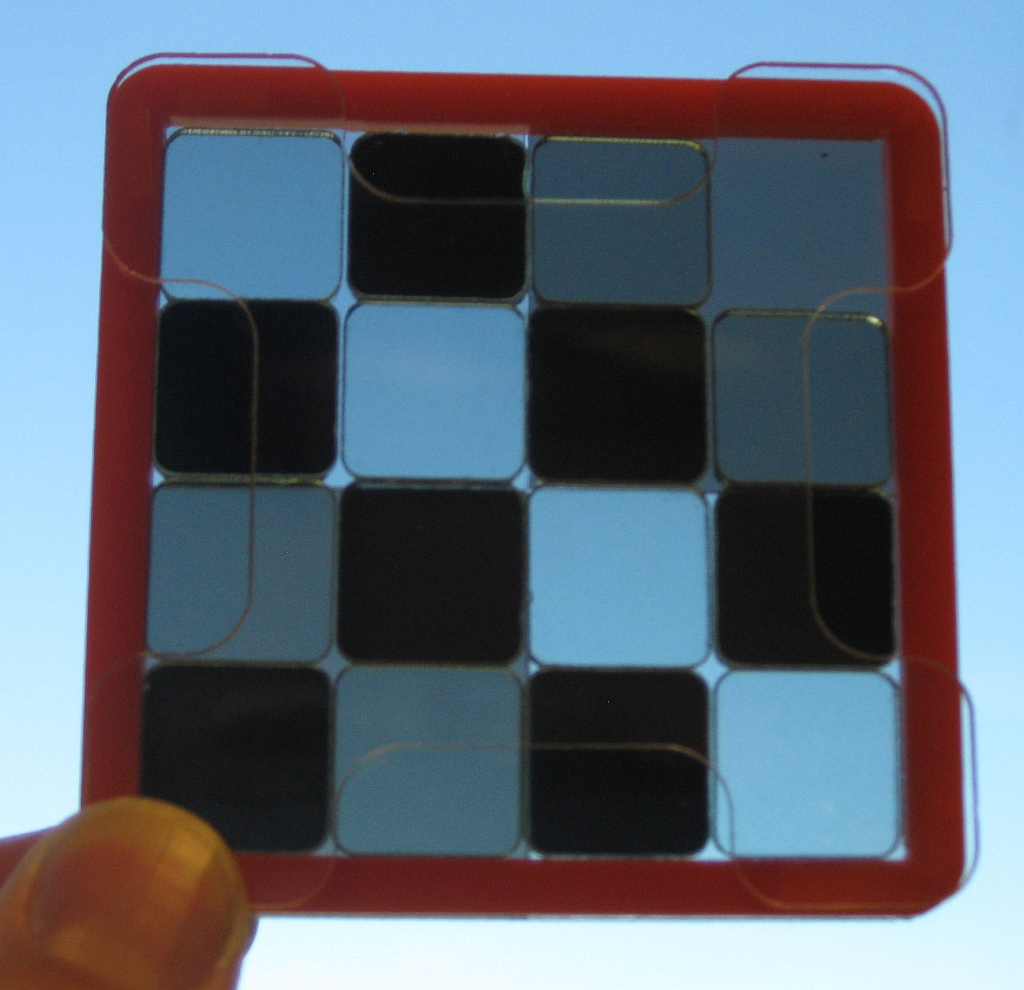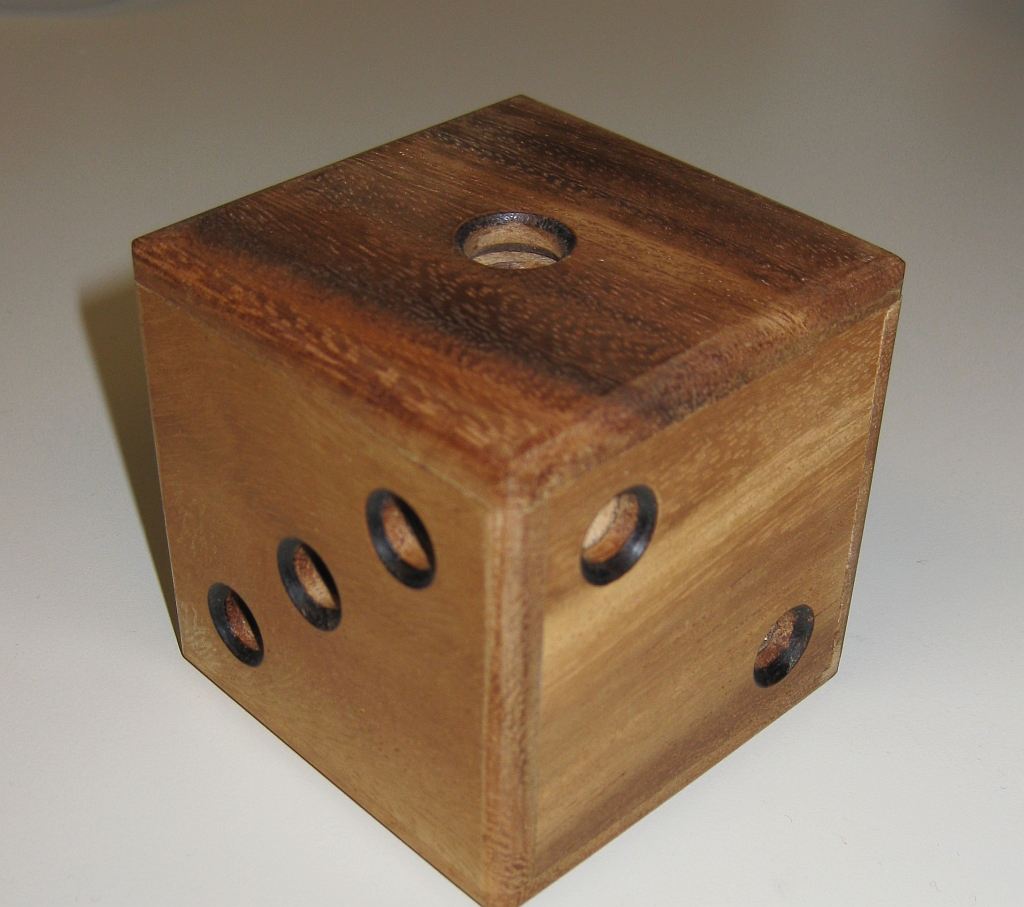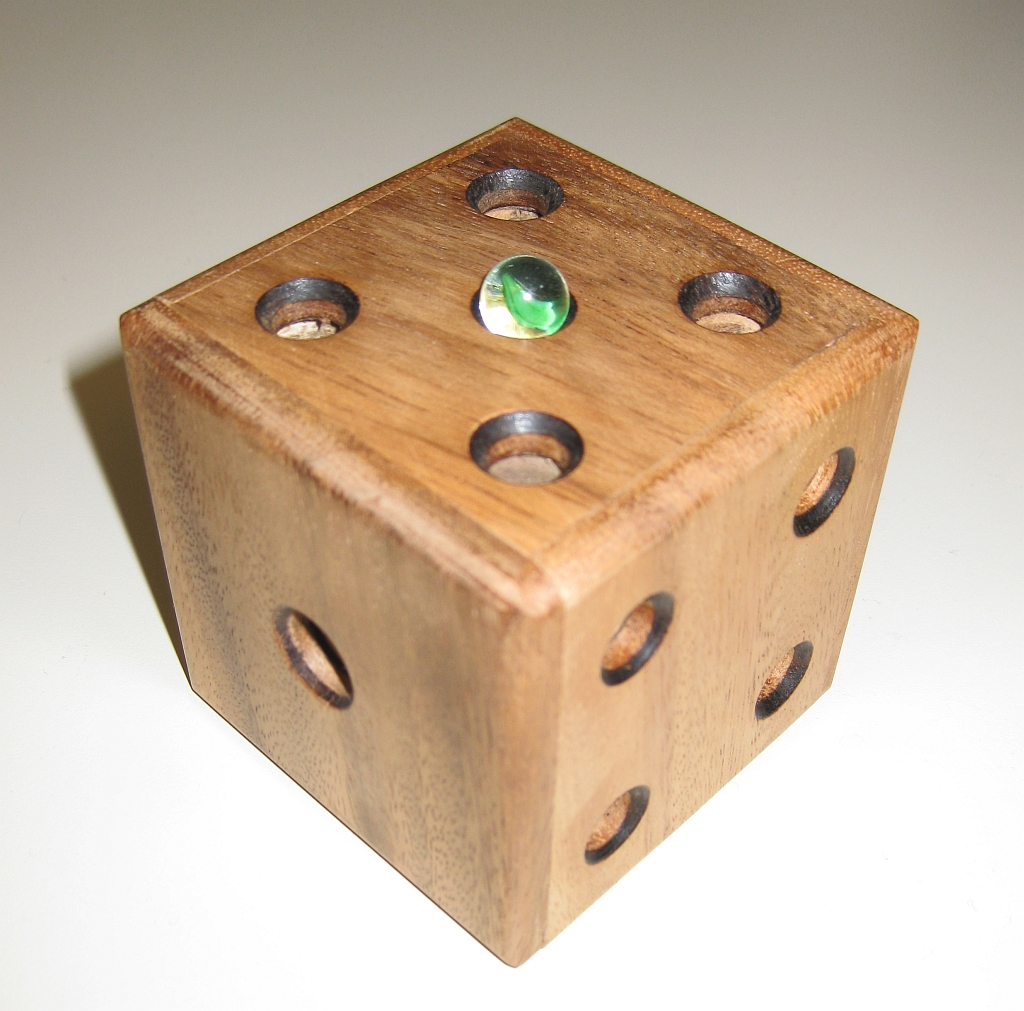Yesterday I reviewed the Perplexus Rookie, and a long while ago, the Perplexus. Today it’s the turn of the Perplexus Epic, the third in the series from designer Michael McGinnis. Given that my review of the Original Perplexus is regularly in the top five posts read on my blog each month if not the most read, clearly there’s a lot of interest in the puzzles.
The Epic is the hardest of the series of Perplexus puzzles, covering 125 stages from start to finish. With four starting points, this time labelled as Practice A, B and C (along with the actual start) this is a serious challenge, and completing the track from the first stage all the way to 125 is a serious dexterity challenge.
The Epic is larger than the original Perplexus at 8″ in diameter and really is a step up in difficulty. Sticking with a much sharper White, Blue and Grey colour scheme, it certainly seems as though this edition is no longer aimed at the younger market, but at the serious puzzler. It certainly looks good sitting on the top of my puzzling shelves. Ok, so it’s the book shelves, that just happen to have puzzles scattered over them as well as the books.
Having spent quite a while trying to make it from the start to the end in one try, I can confirm that this is not an easy puzzle. There are many more moving elements in this edition, with more hump backed bridges, stairs, single walled tracks, drops, tunnels and jumps than either of the other puzzles that you’re not going to make it through this one without some serious practice. When I first started trying to solve the Epic, I had real difficulty being able to get beyond the fifth section – the fourth being a see saw which has a drop at the end of it meaning you have to get the speed just right or you’ll miss the landing. And that’s not the most challenging obstacle in the puzzle.
One of the new challenges I found in the Epic is just finding an angle to be able to see the ball and the current stage of the puzzle at certain points as there’s so much going on in there it’s not always obvious how to hold the ball to get the best view to be able to progress, and you’re going to have to be able to see where you’re going if you hope not to fall off.
The Epic really lives up to its name as a seriously challenging puzzle, that you’re going to get a lot of hours of play from. That is if you don’t throw it across the room in frustration. While I don’t recommend throwing it, I really do recommend picking up a copy. Amazon and Puzzle Master both carry the puzzle for a very reasonable price so you really can’t go wrong.
Finally, let me wish all my readers a Merry Christmas. I hope Santa has been good to you and brought you many new puzzles to keep you busy through all the food that’s sure to fill you to the brim.
